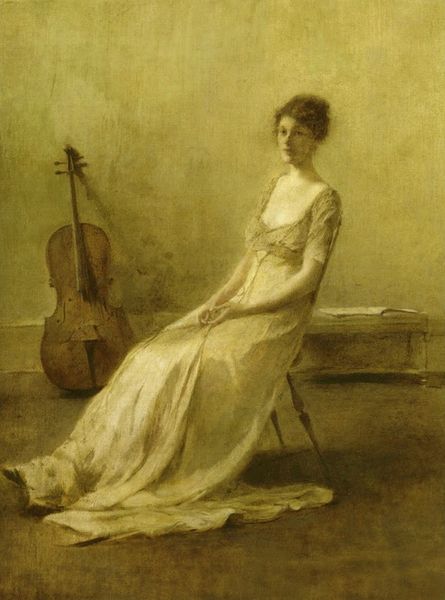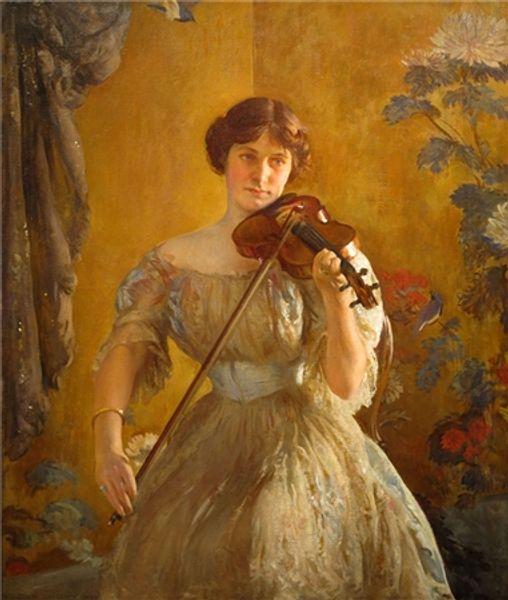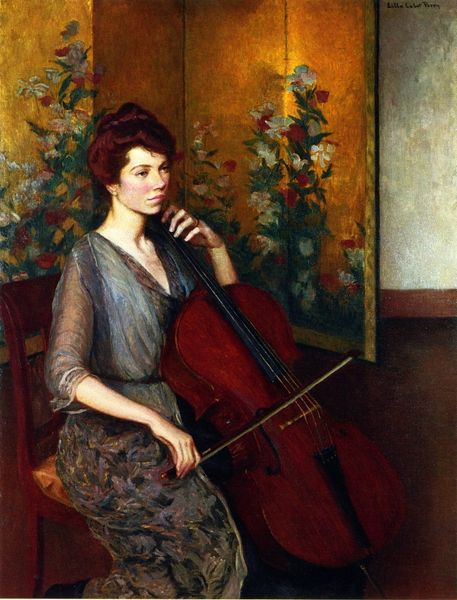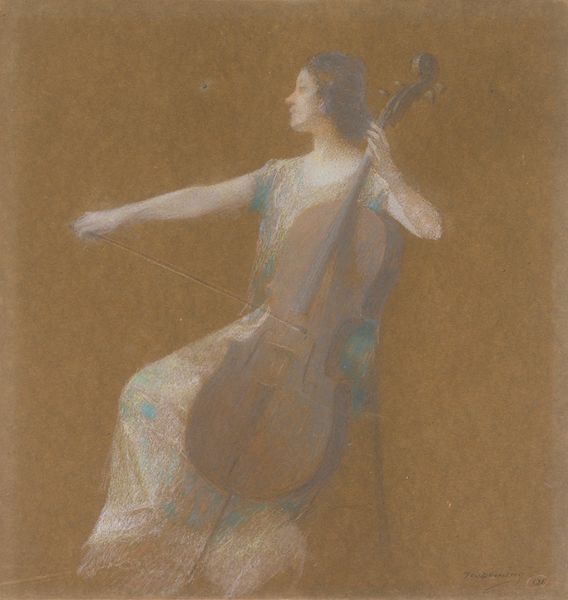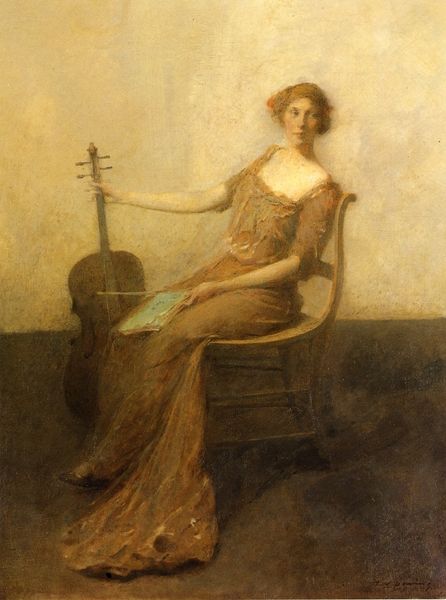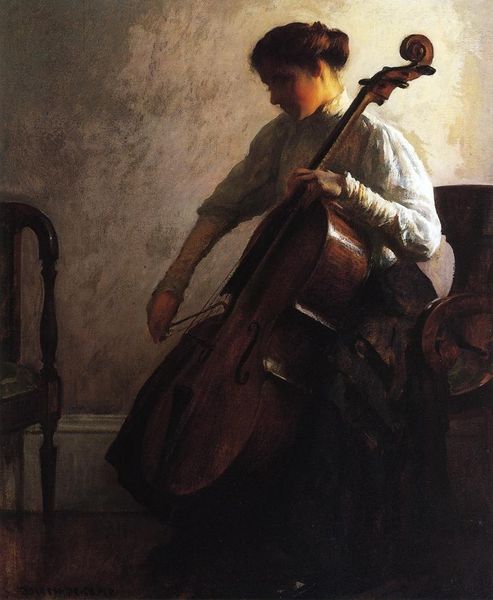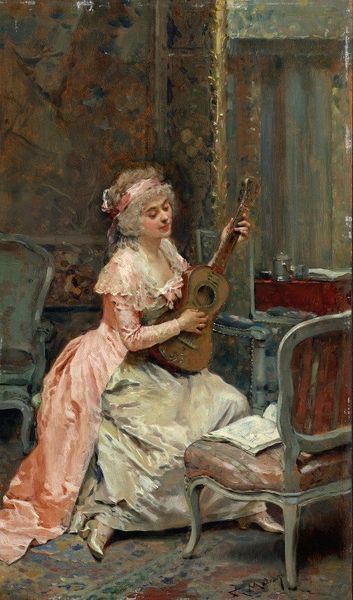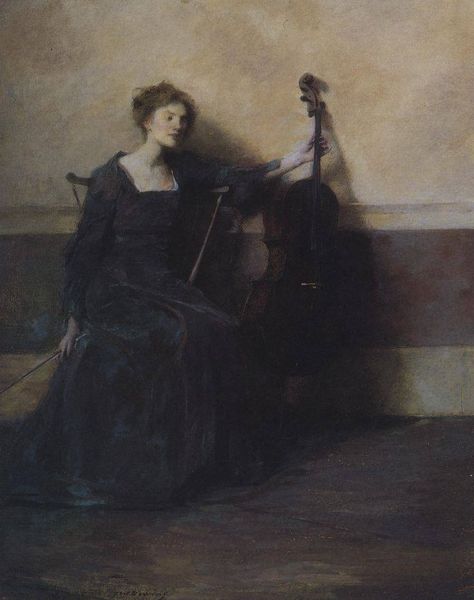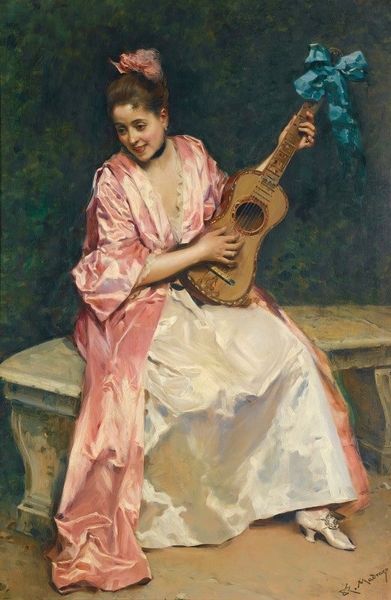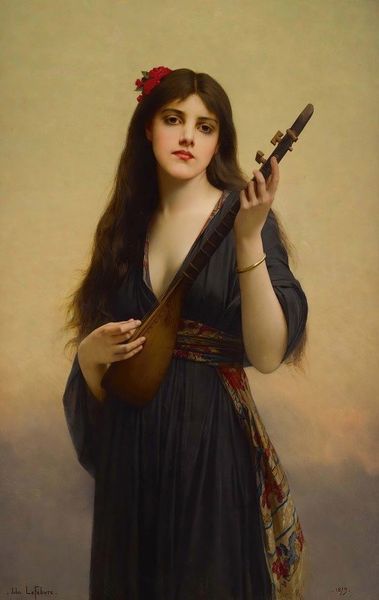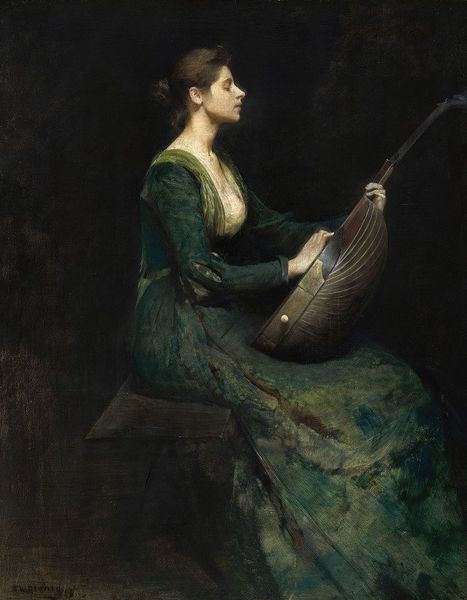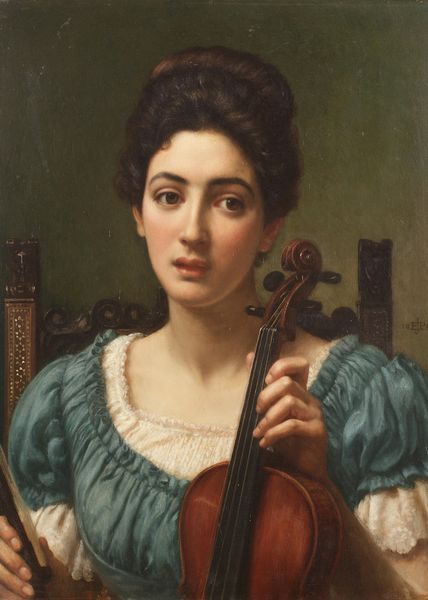
painting, oil-paint
#
portrait
#
painting
#
impressionism
#
oil-paint
#
figuration
#
oil painting
#
aesthetic-movement
#
intimism
#
genre-painting
Copyright: Public domain
Editor: Here we have Thomas Wilmer Dewing’s “Lady with a Cello,” an oil painting that seems to capture a fleeting, intimate moment. I’m immediately drawn to the subdued colors and the woman's graceful pose, which creates a very serene feeling. What do you see in this piece? Curator: This painting provides a glimpse into the Aesthetic Movement, a late 19th-century phenomenon emphasizing art for art’s sake, a rebellion against industrialization and Victorian morality. The woman, a cultivated member of the elite, isn’t just playing music; she's embodying a specific ideal of feminine artistry and refinement. Consider how the cello almost becomes an extension of her body, a visual representation of her soul. Do you think her portrayal challenges or reinforces existing power structures of that era? Editor: That's a compelling point. While she appears empowered through her artistic expression, I wonder if it's also a romanticized, somewhat constrained version of womanhood, packaged for a male gaze. Curator: Exactly! The subdued palette and emphasis on beauty arguably reinforce the era's dominant view of women as decorative objects. Yet, by centering a woman in artistic practice, even if idealized, Dewing disrupts purely patriarchal narratives, subtly claiming space for female agency within the creative sphere. Her presence also begs us to think about gender and labor; it may appear effortless, but she is actively cultivating a skill, demonstrating talent, and making choices about her own creative development. It might be a limited form of expression, but expression nonetheless. Editor: It's fascinating how much can be unpacked from a seemingly simple portrait. I initially saw it as just a pretty painting, but understanding its historical context really transforms the viewing experience. Curator: It encourages us to look beyond surface appearances, doesn't it? Recognizing art as a social artifact helps reveal both the constraints and the potential for agency within a specific historical moment.
Comments
No comments
Be the first to comment and join the conversation on the ultimate creative platform.
